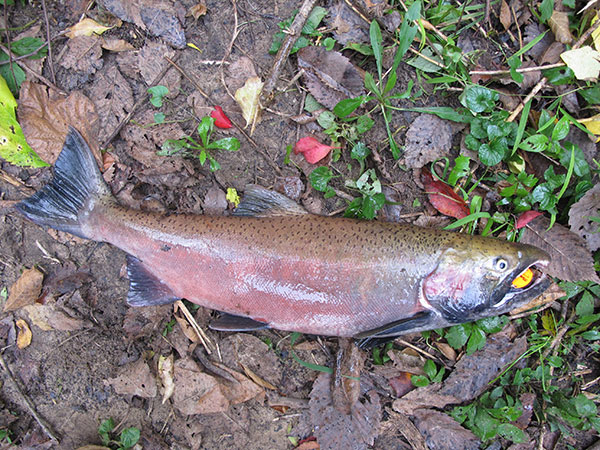By Louie Stout
 Big Numbers of Coho Invade St. Joe
Big Numbers of Coho Invade St. Joe
You better re-string those river rods and reels with new line and load up on spinners and spawn.
The South Bend and Mishawaka sections of the St. Joseph River are filling up with trout and salmon.
That’s right…salmon. Coho, to be exact.
The steelhead appearance is no surprise. They’ve been trickling in since early June. We have about 2,500 in the upper river now, which is pretty good compared to previous years.
But the early showing of coho - and big numbers of ‘em - has been a surprise to both anglers and fish managers.
“We’ve counted 3,600 coho move into South Bend the first 15 days of September,” said Lake Michigan biologist Brian Breidert. “That’s pretty remarkable.”
It sure is. You will have to go all the way back to 1997 to see coho numbers like that entering Indiana waters at such an early stage.
There are now more than 5,000 trout and salmon between the South Bend and Twin Branch Dams. That doesn’t account for the fish lounging below the South Bend dam waiting to move up.
We usually don’t see such high numbers of trout or salmon up here until later this month, but cooler water temperatures, some rain and tweaks in stocking efforts have been paying off big dividends.
Trail Creek in Michigan City is experiencing a similar run with good numbers of steelhead and coho moving out of Lake Michigan and into tributaries.
“The earlier-than-normal cool weather has dropped water temps and got the fish moving sooner than they have in previous years,” said Breidert. “And we know there are more fish coming based on reports we’re hearing from river anglers at Berrien Springs.”
Of course, we still have Michigan’s winter-run fish that move into the St. Joe in October and November. Breidert said some 75 king salmon have moved up as well and there will be more coming, although those numbers will be small.
The biologist expects the number of steelhead moving in the river this fall to be about the same as last year. But with more coho coming, river anglers’ chances of catching big fish have improved greatly.
To add to the excitement, last year’s coho were running about 6 pounds. These fish are 6 to 10 pounds.
That’s because this year’s return is dominated by a more mature coho. Last year, the return comprised mostly of two-year-old “jacks” that were stocked in the previous spring.
“There will be some jacks mixed in with this run, but we are seeing more adult fish,” said Breidert.
A couple of years ago Indiana altered its stocking efforts by eliminating the fall stocking of state-raised coho and holding them at Bodine Hatchery until the following spring. That has produced a 7½-inch fish at stocking, which means the fish are about 2 inches larger when they go into the river. The larger coho is more capable of dodging other predator fish while in the river and it can eat bigger forage once it gets out to Lake Michigan. The better diet produces bigger, healthier fish.
“Early indications are the bigger fish we stock are surviving better than the smaller fish we previously stocked,” said Breidert.
Indiana now stocks 60,000 coho while Michigan stocks 150,000. Only 3.7 percent of the fish that have moved up so far are Indiana fish, but Breidert expects that percentage to climb in subsequent years due to the larger stocking size.
The biologist said the underwater video camera at the South Bend ladder not only helps fish managers count fish moving up, but gives them a clue as to when and where the fish were stocked by examining each fish. The spring stocked fish have had their adipose fin clipped at the hatchery before they were put in the river.
“One of the reasons we’re running behind on our St. Joe run numbers is because there are so many fish in the viewing window it’s taking longer to get through our tapes,” Breidert noted.
Of course, telling the difference between coho and steelhead at this stage of the run isn’t easy. The fish can be easily misidentified, although the Skamania has a more muscular tail and more spots on the tail. Coho have fewer spots on the tail.
It will become easier for anglers in the coming weeks. The cohos will develop a “hooked” jaw and will turn reddish. Steelhead stay silver with a faint pink stripe down the side of the body.
You can keep five fish, either a combination of the two species or of one species. But remember, snagging is illegal. Breidert said conservation officers have made several arrests of anglers fishing illegally and exceeding their bag limits.
Legal fishing techniques for coho are similar to steelhead. Breidert said they both like bright-colored, flashy spinners, flies and will fall for spawn or livebait.
The coho will start to spawn later this month while the steelhead won’t spawn until spring. But once the coho start dropping eggs on the gravel flats, the steelhead will school immediately downstream of those areas and feed on loose eggs.





